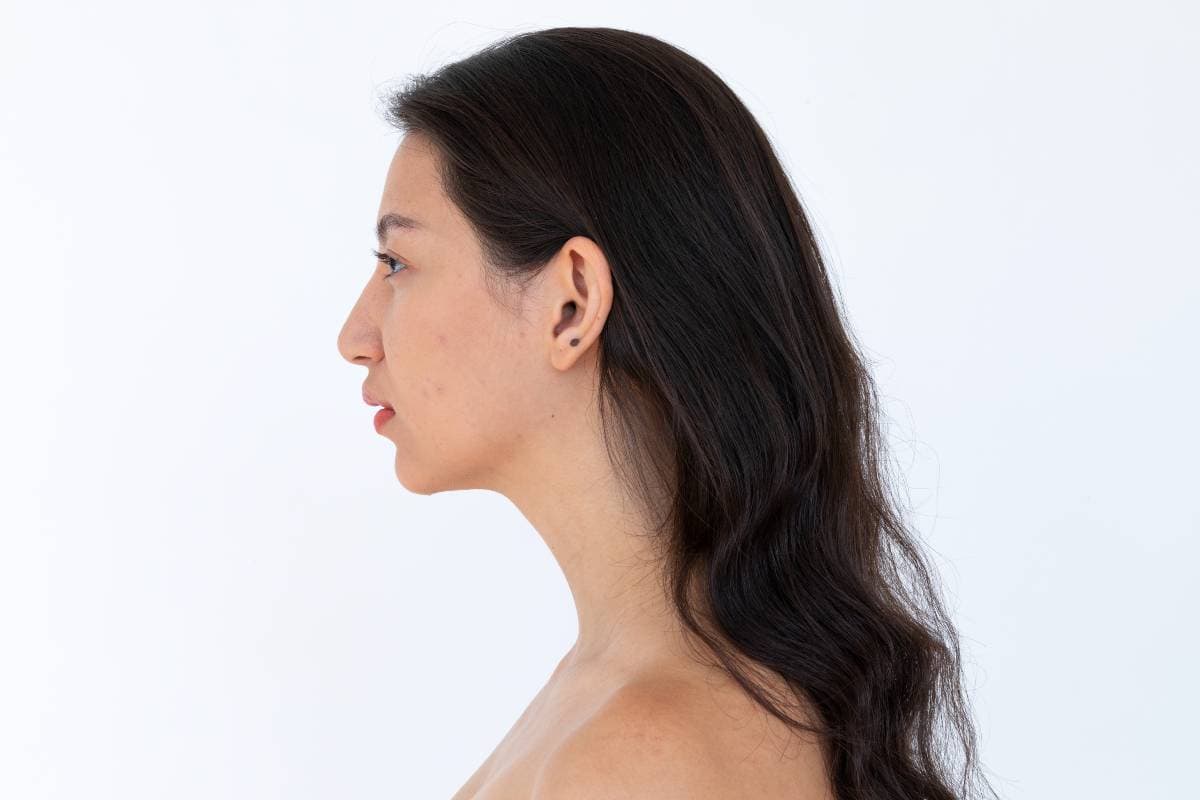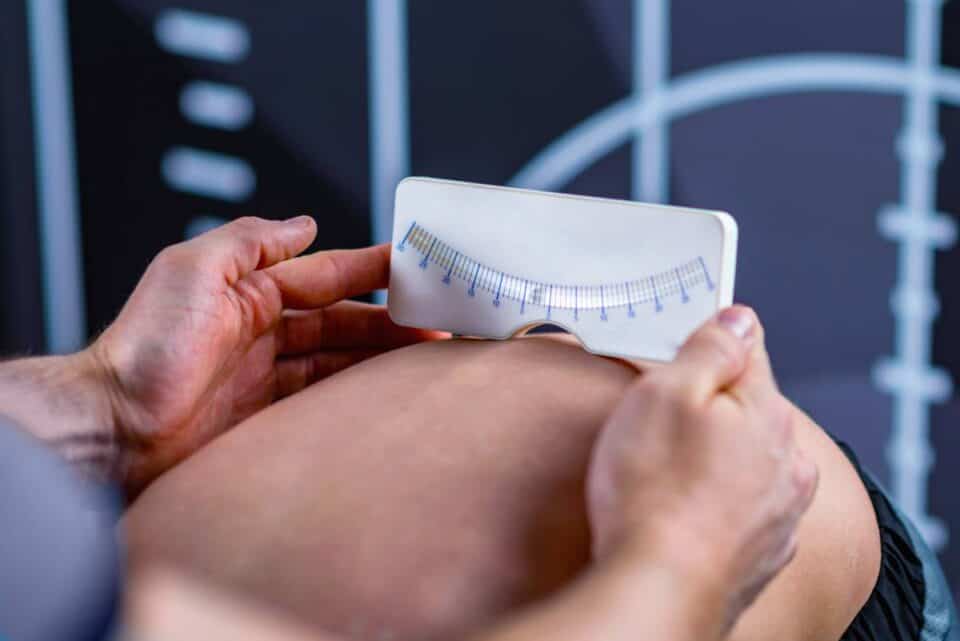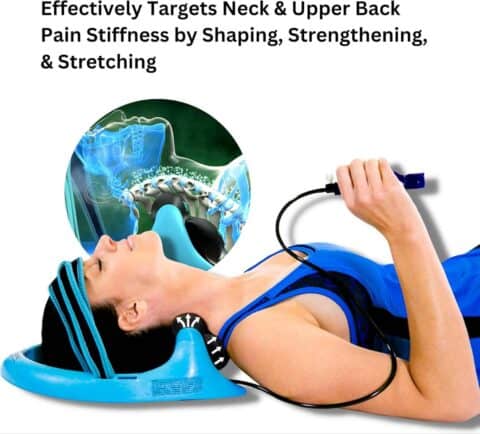Have you ever noticed how your neck feels after a long day of looking down at your phone or hunching over your laptop? As a chiropractor, I see this daily – patients walking in with persistent neck pain, headaches, and that frustrating shoulder tension that just won’t go away. Often, these symptoms point to a reversed cervical curve, a condition I’ve successfully treated in thousands of patients. What many don’t realize is that their neck’s natural curve has begun to straighten or reverse, setting off a chain reaction of discomfort throughout their upper body.
Key Takeaways
- A reversed cervical curve occurs when your neck’s natural C-shaped curve straightens or bends in the wrong direction, often leading to pain and mobility issues
- The condition can result from multiple factors including poor posture, injuries, and modern lifestyle habits like excessive device use
- With proper diagnosis and treatment, most patients can experience significant improvement in their cervical spine alignment and overall quality of life
Is SpineMed Your Path to a Pain-Free Life?
Tired of living with back pain? Take our quick quiz to see if you’re a candidate for the breakthrough SpineMed Treatment. It only takes a few minutes to potentially change your life.
Understanding Your Cervical Spine
Your cervical spine is truly a masterpiece of natural engineering. In its healthy state, it forms a gentle C-shaped curve that opens toward the back of your neck. This natural curve, known as cervical lordosis, isn’t just a random shape – it’s specifically designed to support your head’s weight while allowing for smooth, pain-free movement.
Think of your spine as the foundation of a building. Just as a building needs proper structural alignment to remain stable, your neck needs its natural curve to function optimally. This curve helps distribute the weight of your head (about 10-12 pounds) evenly across your spine and protects the delicate nerve pathways that run through it.1
The Reality of a Reversed Curve
When we talk about a reversed cervical curve, we’re describing a situation where this natural C-shape either straightens out (sometimes called military neck) or actually curves in the opposite direction. In my years of practice, I’ve observed how this condition develops through various mechanisms.
The most common cause I see in my practice is our modern lifestyle. Hours spent looking down at phones and computers create what I call a “perfect storm” for neck problems. The human head weighs about as much as a bowling ball, and when we tilt it forward, the effective weight on our spine increases dramatically.
Formation and Development
A reversed curve typically doesn’t happen overnight. Instead, it’s usually the result of prolonged poor posture, repetitive stress, or trauma. In some cases, it develops gradually through years of poor habits. In others, it can occur more rapidly following an injury like whiplash.
Clinical Presentation and Diagnosis
When patients come to my office with a reversed cervical curve, they often describe a range of symptoms. Most commonly, they experience persistent neck pain, headaches, and a feeling of tightness in their shoulders and upper back. Some also report numbness or tingling in their arms, which can indicate nerve involvement.
During the examination, I typically observe several characteristic signs. The head often sits forward of the shoulders, and there’s usually visible tension in the upper trapezius muscles. Range of motion may be restricted, particularly when trying to look up or turn the head.
Advanced Imaging and Assessment
X-rays provide the clearest picture of cervical curve changes. When I review these images with patients, I can show them exactly how their spine’s alignment differs from the ideal. In a normal cervical spine, we expect to see a curve that looks like a backward C. In patients with a reversed curve, this C either straightens out or reverses direction.
The Shoulder Tension Connection
One question I frequently hear is why shoulder tension accompanies neck problems. The answer lies in biomechanics. When your neck curve reverses, your body must compensate to keep your head upright. This compensation primarily comes from your upper trapezius muscles, which become overworked and chronically tight.
Treatment Approach
In my practice, I take a comprehensive approach to treating reversed cervical curves. The goal isn’t just to relieve pain – though that’s certainly important – but to address the underlying structural issues and prevent future problems.
We begin with specific chiropractic adjustments designed to improve spinal alignment and mobility. These are combined with targeted exercises to strengthen the deep neck flexors and other supporting muscles. I also emphasize proper posture and ergonomics, as these factors are crucial for long-term success.
Creating Lasting Change
Restoring a healthy cervical curve takes time and consistency. Most patients see initial improvement in their symptoms within a few weeks, but achieving lasting structural changes typically requires 3-to 6 months of dedicated treatment. Throughout this process, we regularly assess progress through both subjective improvement and objective measures.
Living with and Managing Your Condition
Daily management is crucial for success. I teach my patients proper sleeping positions, workplace ergonomics, and exercises they can do at home. Small changes, like adjusting computer screen height or taking regular posture breaks, can make a significant difference in long-term outcomes.

Understanding Your Treatment Journey
When patients first visit me for their reversed cervical curve, they often feel overwhelmed. I take pride in making this journey clear and manageable. Let me walk you through what you can expect in our comprehensive care approach.
Your First Visit: More Than Just an Exam
During your initial consultation, I’ll take the time to truly understand your story. What activities have become difficult? How is this affecting your daily life? Beyond the physical examination, this understanding helps me create a treatment plan that fits my lifestyle.
The Role of Posture in Modern Life
Tech Neck: A Modern Epidemic
I’m seeing more patients than ever with neck alignment issues due to constant device use. The average person spends over 4 hours daily looking down at their phone – that’s like having a bowling ball pulling on your neck muscles for hours! I’ll teach you simple strategies to minimize this strain while still staying connected.
Workplace Wellness
Your office setup might be silently contributing to your neck issues. I’ve helped countless professionals transform their workspaces into spine-friendly environments. Small adjustments in monitor height, chair position, and desk arrangement can make a remarkable difference. Here are some products I recommend that will for sure help you with this.
Beyond the Adjustments
Home Care Success Strategies
Treatment doesn’t stop when you leave my office. I’ll equip you with specific exercises and stretches designed for your condition. These aren’t generic routines – they’re carefully selected movements that complement your in-office treatment.
Sleep Positioning for Spinal Health
The average person spends a third of their life sleeping.2 I’ll show you how to make those hours work for, not against, your spine. Many patients are surprised to learn how their sleeping position affects their cervical curve.
The Mind-Body Connection
Stress and Your Spine
Have you noticed your neck feels tighter during stressful periods? There’s a direct connection between mental stress and physical tension. I’ll help you understand this relationship and provide techniques to manage both aspects effectively.
Building Better Movement Habits
Lasting improvement comes from changing daily habits. Together, we’ll identify movement patterns that may be hindering your recovery and replace them with spine-friendly alternatives. This isn’t about restricting your life – it’s about moving smarter.
Success Stories That Drive My Purpose
As a chiropractor, nothing inspires me more than seeing real transformations in my patients’ lives. At TheBodyFix, we document these journeys to help others understand the potential of proper spinal care and decompression therapy.
I’ve witnessed countless patients regain their mobility and return to activities they thought were lost forever. From being able to walk downtown for hours without pain to waking up feeling refreshed instead of stiff, these improvements make a real difference in daily life.
Want to read about more life-changing experiences? Check out our spinal decompression success stories from actual patients who’ve found relief through our treatments.
The Science Behind Success
What makes these transformations possible is our commitment to evidence-based treatments and personalized care. Every success story begins with a thorough understanding of the patient’s condition and the careful application of proven techniques. Whether it’s treating a reversed cervical curve or addressing chronic back pain, we focus on delivering measurable results through comprehensive care.
Research and Innovation
Latest Developments in Spinal Care
I constantly stay updated with the latest research in spinal health. From new therapeutic techniques to innovative treatment protocols, I bring the best evidence-based practices to my patients.
Preventive Care Strategies
The best treatment is prevention. I’ll share proactive approaches to maintain your spinal health, helping you avoid future issues before they develop.
Why I Choose SpineMed® for My Patients
In my years of practice, I’ve seen countless patients who thought surgery was their only option for severe neck and back pain. That’s why I’m passionate about offering the SpineMed® Decompression treatment at TheBodyFix. This incredible technology has helped my patients avoid invasive procedures while getting their lives back.
Picture this: gentle, targeted decompression that creates space between your vertebrae, allowing herniated discs to retract naturally and increasing blood flow to promote healing. It’s like giving your spine a chance to breathe and reset itself.
What makes me particularly excited about SpineMed® is how it complements our treatment for conditions like herniated discs, sciatica, and spinal stenosis. When patients first hear about spinal decompression, they’re often skeptical. But watching their faces light up when they can finally bend down to tie their shoes without pain or play with their grandkids again – that’s what drives me.
Whether you’re dealing with nerve pain shooting down your leg or chronic neck issues, I’d love to show you how this advanced technology could be the missing piece in your recovery journey.
Is SpineMed Your Path to a Pain-Free Life?
Tired of living with back pain? Take our quick quiz to see if you’re a candidate for the breakthrough SpineMed Treatment. It only takes a few minutes to potentially change your life.
FAQs
Why are regular chiropractic check-ups essential, even if I’m not in pain?
What is a reversed cervical curve?
What causes the loss of cervical lordosis?
How can one identify a reverse cervical curve?
What are the symptoms of loss of cervical lordosis?
Conclusion
Living with neck pain isn’t just about managing discomfort – it affects how you work, sleep, and enjoy life’s simple pleasures. I’ve seen how a reversed cervical curve can make even basic activities like checking your blind spot while driving or picking up your child feel challenging due to the effects of kyphosis. But here’s the encouraging news: I’ve helped countless patients restore their neck’s natural curve and reclaim their active lifestyle.
Don’t wait until that nagging neck pain becomes unbearable. I understand it’s easy to push off taking care of yourself when life gets busy. But think about this: investing in your neck health today means potentially avoiding years of discomfort and limitations tomorrow.
Let’s create your personalized treatment plan together. I’ll take the time to understand your specific concerns, lifestyle, and goals. No cookie-cutter approaches – just dedicated, personalized care to help you achieve lasting relief. Book a consultation with me today!
- https://www.bonehealthandosteoporosis.org/patients/treatment/exercisesafe-movement/proper-body-alignment/ ↩︎
- https://www.theguardian.com/notesandqueries/query/0,5753,-50504,00.html#:~:text=If%20the%20average%20night’s%20sleep,years%20asleep%2C%20or%209%2C125%20days. ↩︎
Blog Disclaimer: The information provided on The BodyFix Chiro blog is for general informational and educational purposes only and is not intended as medical advice. These articles reflect our opinions and experiences but should not be used to diagnose or treat any health conditions. Always consult with your physician, chiropractor, or other qualified healthcare provider before starting any new treatment, exercise program, or making changes to your health routine. Any actions you take based on information from this blog are entirely at your own risk, and The BodyFix Chiro and its contributors disclaim any liability for the decisions you make based on this information.




